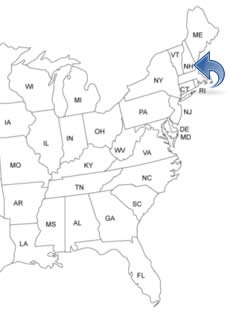NEW HAMPSHIRE PEOPLE SEARCH!
- ✔ Contact Info
- ✔ Phone Numbers
- ✔ Criminal Records
- ✔ Income Info
- ✔ Neighbors
- ✔ People's Age
- ✔ Property Ownership
- ✔ And Much More
Concord, New Hampshire
Concord is located in the south-central part and is the capital and the third largest city in the U.S. State of New Hampshire. In Concord, the famous Concord Coach was built. The area has many landmarks and other tourist attractions and the city is home to the University of New Hampshire School of Law. Many independent films and filmmakers visit Concord during the SNOB Film Festival.
To See And To Do In Concord
- McAuliffe-Shepard Discovery Center
- Canterbury Shaker Village
- Concord Craft Brewing Company
- Beaver Meadow Golf Course
- Downtown
- Red River Theatres
- The Concord City Auditorium
- Carter Hill Orchard Farm
- Capitol Center for the Arts
- Explore the trail system
History Of Concord - Timeline
Long before the first Europeans came to the area, the Abenaki tribe lived there. The called it Pennacook and the first few white sellers in 1659, also called the place Penacook. In 1725, people from Massachusetts came and settled and called the area the Plantation of Penny Cook.
In 1726 the first church was built and Main Street in Concord was created. In 1730, the Old North Cemetery was built. In 1733, the Walker-Woodman House was built. It is the oldest standing house in Concord. In 1734, the town was incorporated as Rumford. In 1765, the town was renamed to Concord. In 1787, Levi Hutchins of Concord invented the first alarm clock. In 1790, the Rolfe Barn was built.
In 1807, Samuel Blodget opened a canal and lock system. In 1808, Concord became the state capital. In 1813, Lewis Downing came to Concord and built his first Concord Wagon. A couple of years later, he and J. Stephens Abbot started to build the now famous Concord Coach. In 1819, the State House was completed and it is the oldest in continuous use in the country. In 1826, the Merrimack County Bank building was completed. In 1827, the Dimond Hill Farm was established.
In 1831, the Upham-Walker House was built by Nathaniel Gookin Upham who was a judge in Concord. In 1835, the New Hampshire Governor's Mansion (Bridges House), was built. In 1844, the Farrington House was built. In 1846, White Farm was built by Nathaniel White, a businessman, politician, social reformer, and philanthropist. In 1847, the Leavitt Farm was built. In 1848, the Reuben Foster House and Perley Cleaves House was built.
In 1851, the Lewis Downing Jr. House was built. Lewis Downing was a coach and carriage builder and owned the Abbot-Downing Company. Also in 1851, the Eagle Hotel was built. In 1851, the Franklin Pierce House was completed. Franklin Pierce, the 14th President of the United States who here with his family. In 1860, the 2 1⁄2 Beacon Street building (New Hampshire State Prison Warehouse) was built. Also in 1860, the Blossom Hill and Calvary Cemeteries was built, and President Abraham Lincoln visited the city.
In 1864, the daily newspaper, the Concord Monitor was established. In 1879, the Henry J. Crippen House was built. In 1884, the New Hampshire Legislative Office Building was completed. In 1886, the Chamberlin House was completed. In 1888, the Concord Gas Light Company Gasholder House was built. In 1891, the Concord Hospital opened. In 1892, the Page Belting Company Mills was built. In 1894, the Endicott Hotel was completed.
In 1904, the Concord City Auditorium was built. In 1973, the University of New Hampshire School of Law was founded. In 2001, Hippo Press was founded.

